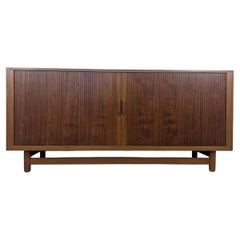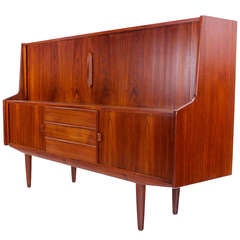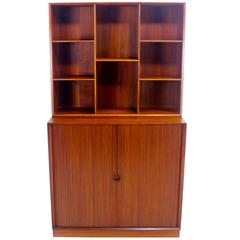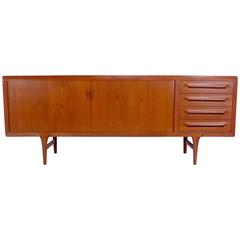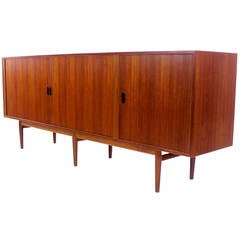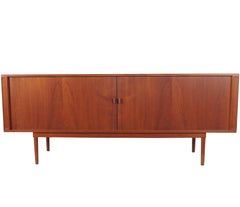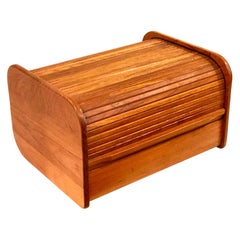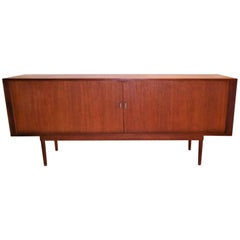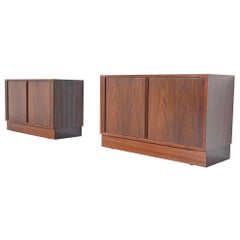Scandinavian Design Tambour
Vintage 1960s Danish Mid-Century Modern Credenzas
Teak
20th Century Scandinavian Modern Credenzas
Teak
Mid-20th Century Danish Scandinavian Modern Cabinets
Teak
Mid-20th Century Danish Scandinavian Modern Credenzas
Teak
Mid-20th Century Danish Scandinavian Modern Credenzas
Teak
Vintage 1960s Danish Scandinavian Modern Credenzas
Teak
20th Century European Scandinavian Modern Decorative Boxes
Teak
Vintage 1960s Danish Scandinavian Modern Credenzas
Vintage 1960s Danish Scandinavian Modern Cabinets
Rosewood
Vintage 1950s Danish Scandinavian Modern Credenzas
Teak
Vintage 1960s Danish Scandinavian Modern Credenzas
Rosewood
Vintage 1960s Danish Scandinavian Modern Credenzas
Teak, Wood
Vintage 1960s Danish Credenzas
Chrome
Vintage 1930s Danish Scandinavian Modern Shelves and Wall Cabinets
Maple
20th Century Danish Scandinavian Modern Cabinets
Teak
Vintage 1960s Danish Mid-Century Modern Credenzas
Teak
Vintage 1980s Danish Scandinavian Modern Decorative Boxes
Teak
20th Century Danish Scandinavian Modern Cabinets
Teak
Vintage 1970s Danish Scandinavian Modern Credenzas
Vintage 1950s Danish Scandinavian Modern Cabinets
Birch, Teak
Vintage 1960s Danish Scandinavian Modern Corner Cupboards
Teak
Mid-20th Century Danish Scandinavian Modern Cabinets
Teak
Vintage 1960s Swedish Scandinavian Modern Buffets
Teak
Vintage 1960s Danish Scandinavian Modern Cabinets
Teak
Scandinavian Design Tambour For Sale on 1stDibs
How Much is a Scandinavian Design Tambour?
A Close Look at Scandinavian-modern Furniture
Scandinavian modernism is perhaps the warmest and most organic iteration of modernist design. The work of the designers associated with vintage Scandinavian modern furniture was founded on centuries-old beliefs in both quality craftsmanship and the ideal that beauty should enhance even the humblest accessories of daily life.
ORIGINS OF SCANDINAVIAN MODERN FURNITURE DESIGN
- Emerged in the 1930s
- Scandinavian design and Nordic design originated primarily in Denmark, Sweden, Finland, Iceland and Norway
- Introduced in the United States in mid-20th century
- Informed by the Bauhaus; influenced American mid-century modernism
CHARACTERISTICS OF SCANDINAVIAN MODERN FURNITURE DESIGN
- Bold, clean lines and simple, sturdy symmetries
- Use of natural materials — native woods such as pine, ash and beech
- Open, airy spaces
- Promotion of functionality
- Emphasis on craftsmanship; rooted in cabinetry profession and traditional construction techniques
- Minimal ornamentation (little to no embellishment)
- A neutral or light color palette owing to prominence of light woods
SCANDINAVIAN MODERN FURNITURE DESIGNERS TO KNOW
- Alvar Aalto
- Hans Wegner
- Kaare Klint
- Arne Jacobsen
- Greta Magnusson Grossman
- Finn Juhl
- Arne Vodder
- Verner Panton
ICONIC SCANDINAVIAN MODERN FURNITURE DESIGNS
VINTAGE SCANDINAVIAN MODERN FURNITURE ON 1STDIBS
The gentle, organic contours that are typical of Scandinavian design appear in the furnishings and decor created by Danish, Finnish and Swedish designers not as a stylistic gesture, but rather as a practical, ergonomic — and, as importantly, elegant — response to the human form.
Each nation produced exceptional talents in all areas of the applied arts, yet each had its forté. Sweden was home to Greta Magnusson Grossman and Bruno Mathsson — creators of the classic Grasshopper lighting series and Berlin daybed, respectively — but the country excelled most notably at ceramics. In the 1920s at the great Gustavsberg porcelain manufactory, Wilhelm Kåge introduced pieces in the Scandinavian style based on influences from folklore to Cubism; his skills were passed on to his versatile and inspired pupils Berndt Friberg and Stig Lindberg.
Likewise, Finland produced a truly ingenious Scandinavian modern furniture designer in the architect Alvar Aalto, a master at melding function and artistic form in works like the Paimio chair, created in collaboration with his first wife, Aino. Yet Finnish glassware was pre-eminent, crafted in expressive, sculptural designs by Tapio Wirkkala and Timo Sarpaneva.
The Danes excelled at chairs. Hans Wegner and Arne Jacobsen were exemplars of the country’s facility with wood, particularly teak.
Wegner created such iconic pieces as the Round chair and the Wishbone chair; Jacobsen — while the revolutionary architect and furniture innovator produced the best-selling plywood Ant chair — designed two classic upholstered pieces of the 1950s: the Swan chair and Egg chair. The list of great Danes could go on and on, including Finn Juhl, a stylistic maverick and maker of the bold Chieftain chair; Poul Kjaerholm, with his lean metal-and-rattan aesthetic; and Verner Panton, who introduced a vibrant Pop note into international design.
Today, decades after their heyday, the prolific, ever-evolving Scandinavian modernists continue to amaze and delight, and interior designers all over the world use their pieces to bring warmth to any given space.
On 1stDibs, you will note both instantly recognizable vintage Scandinavian modern chairs, sofas, rugs and tables — those that have earned iconic status over time — and many new discoveries.
Finding the Right Storage-case-pieces for You
Of all the vintage storage cabinets and antique case pieces that have become popular in modern interiors over the years, dressers, credenzas and cabinets have long been home staples, perfect for routine storage or protection of personal items.
In the mid-19th century, cabinetmakers would mimic styles originating in the Louis XIV, Louis XV and Louis XVI eras for their dressers, bookshelves and other structures, and, later, simpler, streamlined wood designs allowed these “case pieces” or “case goods” — any furnishing that is unupholstered and has some semblance of a storage component — to blend into the background of any interior.
Mid-century modern furniture enthusiasts will cite the tall modular wall units crafted in teak and other sought-after woods of the era by the likes of George Nelson, Poul Cadovius and Finn Juhl. For these highly customizable furnishings, designers of the day delivered an alternative to big, heavy bookcases by considering the use of space — and, in particular, walls — in new and innovative ways. Mid-century modern credenzas, which, long and low, evolved from tables that were built as early as the 14th century in Italy, typically have no legs or very short legs and have grown in popularity as an alluring storage option over time.
Although the name immediately invokes images of clothing, dressers were initially created in Europe for a much different purpose. This furnishing was initially a flat-surfaced, low-profile side table equipped with a few drawers — a common fixture used to dress and prepare meats in English kitchens throughout the Tudor period. The drawers served as perfect utensil storage. It wasn’t until the design made its way to North America that it became enlarged and equipped with enough space to hold clothing and cosmetics. The very history of case pieces is a testament to their versatility and well-earned place in any room.
In the spirit of positioning your case goods center stage, decluttering can now be design-minded.
A contemporary case piece with open shelving and painted wood details can prove functional as a storage unit as easily as it can a room divider. Alternatively, apothecary cabinets are charming case goods similar in size to early dressers or commodes but with uniquely sized shelving and (often numerous) drawers.
Whether you’re seeking a playful sideboard that features colored glass and metal details, an antique Italian hand-carved storage cabinet or a glass-door vitrine to store and show off your collectibles, there are options for you on 1stDibs.
- What is Scandinavian design?1 Answer1stDibs ExpertSeptember 11, 2019
Scandinavian design, associated with the countries of Northern Europe, is characterized by simplicity, functionality and beauty,
- 1stDibs ExpertFebruary 22, 2021Because Scandinavian design focuses on craftsmanship and clean lines, it is a style that lasts the test of time. Designed to maximize light and focusing on minimalism and functionality, it is very aesthetically pleasing.
- 1stDibs ExpertAugust 2, 2023
There isn’t much of a difference between Nordic and Scandinavian design in that when it comes to furniture and decor, the descriptors “Nordic” and “Scandinavian” are often used interchangeably. The term Scandinavia is primarily used to refer to Denmark, Norway and Sweden. (It is sometimes inclusive of Iceland and Finland, too.) The Nordic region of the world also includes the likes of Norway, Denmark, and Sweden as well as Iceland, Finland, Greenland, the Faroe Islands and Åland.
Scandinavian modernism is a warm and organic iteration of modernist design that chiefly originated in Denmark, Sweden and Finland during the 1930s. It was introduced to the United States during the mid-20th century and had a profound influence on American mid-century modern design.
Scandinavian modernists are known for their emphasis on craftsmanship and use of natural materials such as ash, pine and beech. Scandi interiors are minimalist, bright and airy, and feature neutral palettes and classic shapes.
Characteristics of the work of such Scandinavian modernists such as Hans Wegner, Finn Juhl and Greta Magnusson Grossman include bold, clean lines and simple, sturdy symmetries. Finland produced a truly ingenious Scandinavian modern furniture designer in the architect Alvar Aalto, a master at melding function and artistic form in works like the Paimio chair, created in collaboration with his first wife, Aino. Yet Finnish glassware was pre-eminent, crafted in expressive, sculptural designs by Tapio Wirkkala and Timo Sarpaneva.
For design enthusiasts all over the world, the promotion of functionality and simplicity associated with Scandinavian modernism and Nordic design continues to prove irresistible.
- 1stDibs ExpertApril 22, 2024Bold, clean lines and simple, sturdy symmetry help define what Scandinavian modern design looks like. For furniture, designers working in this style often use native woods such as pine, ash and beech, giving pieces a light color palette. The emphasis of Scandinavian modern design is on functionality over ornamentation, so most furnishings have little to no decorative embellishment. Some iconic examples of Scandinavian modern design include Arne Jacobsen's Ant chair, Greta Magnusson-Grossman's Grasshopper table lamp, Alvar Aalto's Stool 60, Poul Henningsen's Artichoke lamp and Hans J. Wegner's Wishbone chair. On 1stDibs, explore a wide variety of Scandinavian modern furniture.
